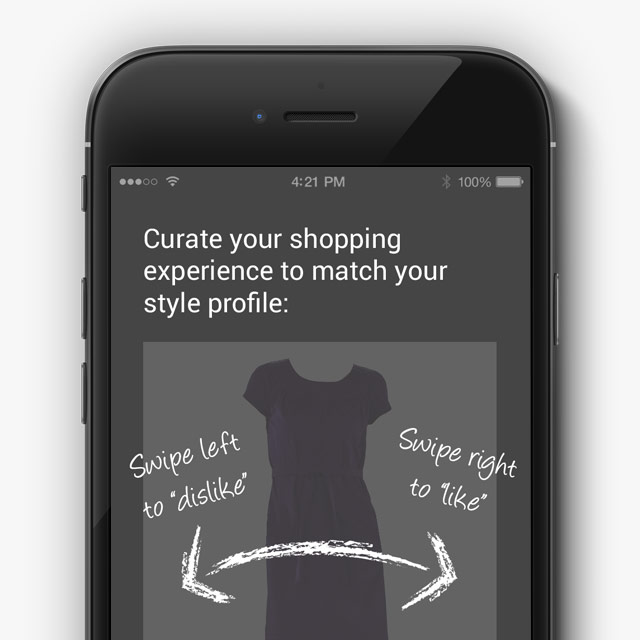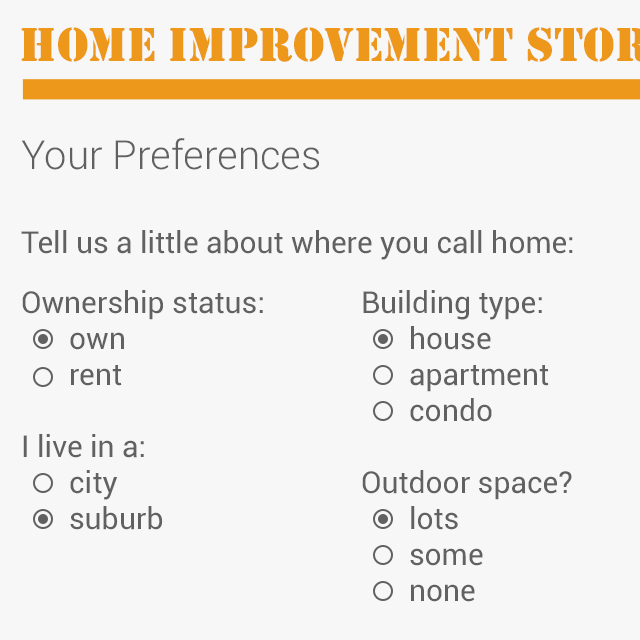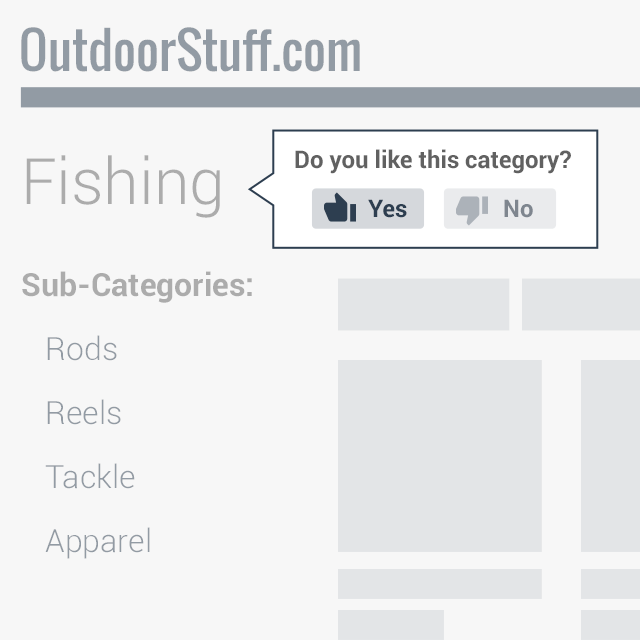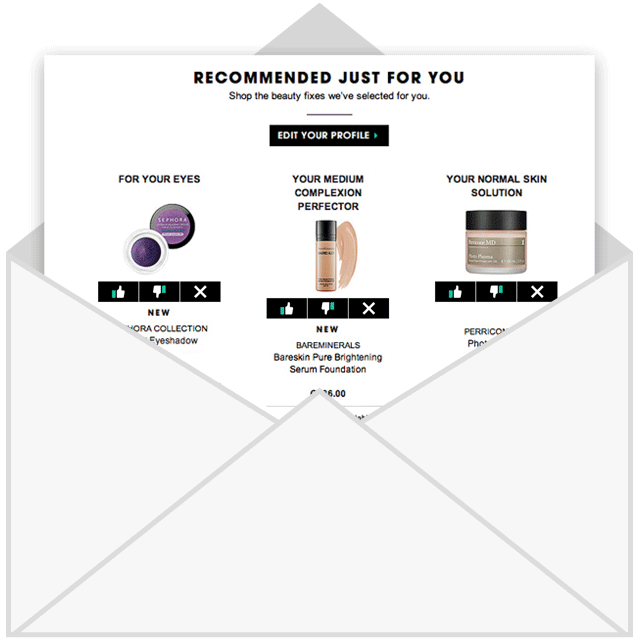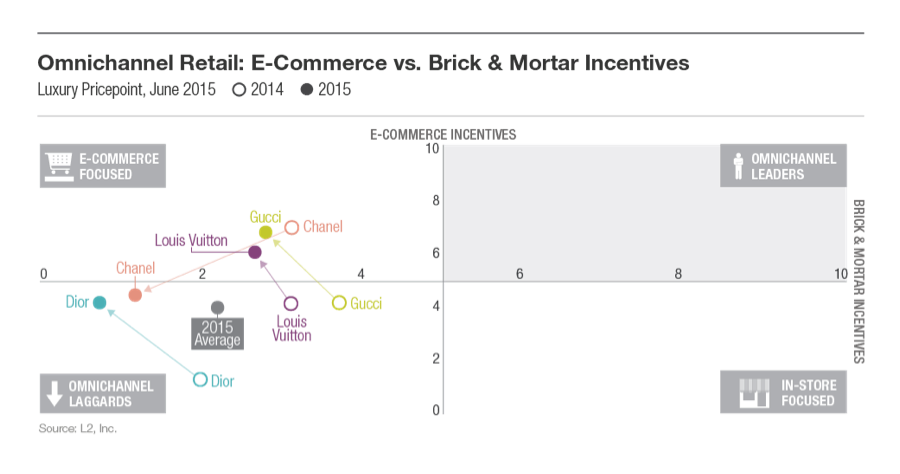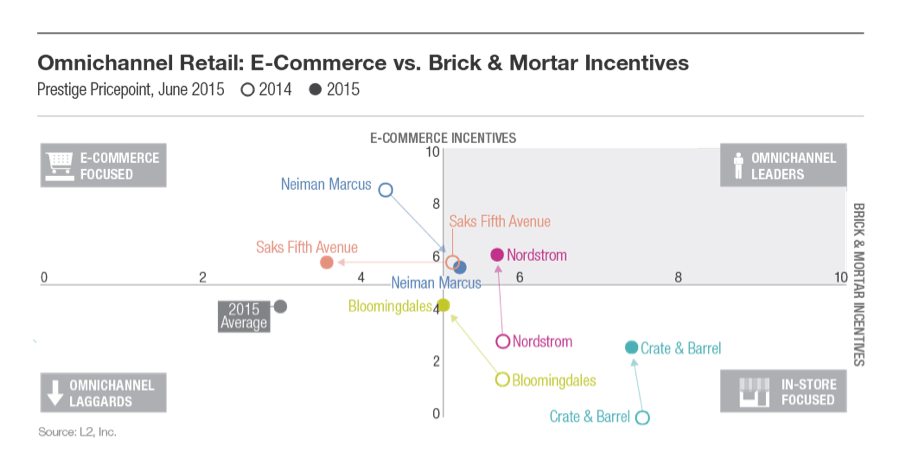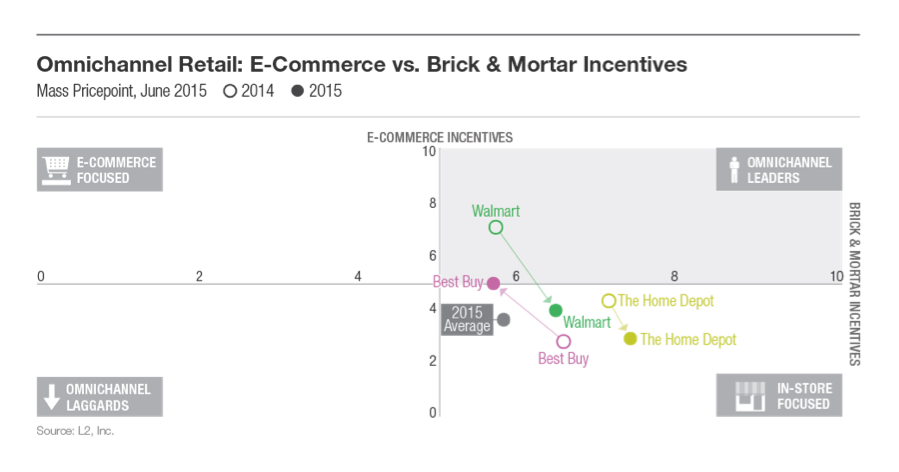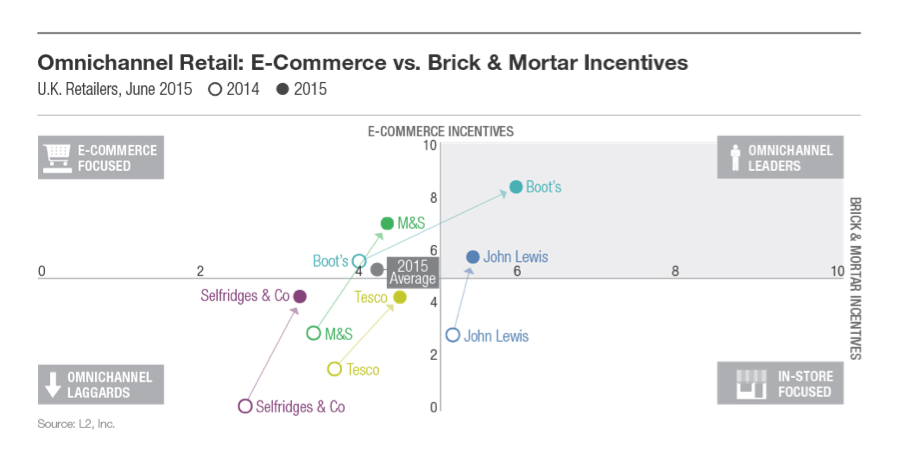Luxury leader uses RichRelevance’s Relevance Cloud™ platform to provide premium experience and personalized service at every touchpoint – driving a 40% revenue boost from personalization
San Francisco, CA – January 13, 2015 – RichRelevance®, the global leader in omnichannel personalization, today announced that RichRelevance client Barneys New York has received a 2015 Customer Engagement Award from Retail TouchPoints. Barneys New York was honored as a Gold winner in the Cross-Channel Optimization category based on its innovative omnichannel strategies that have delivered a 60% increase in mobile revenue and a 40% revenue boost from personalization.
Barneys New York: Relevance Cloud Powers Cross-Channel Optimization Success
Barneys is using the Relevance Cloud platform and product suite to create and sustain a personal connection with customers regardless of where they shop — on web, mobile, tablet or in the store. The foundation is the ability to collect, analyze and connect in-store data with online purchase and behavioral data, as well as product catalogs and inventory systems. This data then fuels a Barneys New York experience that includes online and offline components. For example, a shopper can check out content on jewelry; return to her mobile device; head to the store to complete her purchase with the help of a sales associate who is armed with details on recent arrivals, and product recommendations based on past purchases and behavior. Representative innovations include:
Digital personalization: Earlier this year, Barneys New York debuted a fully responsive site to optimize the digital experience across all devices. The new experience enhances product presentation and allows for better personalization of editorial content and product recommendations to a unique shopper’s tastes (again, taking into account online and offline activities).
Data-driven clienteling: Barneys New York also debuted a new clienteling app for sales associates. Available on smartphone and tablet, the new app arms sales associates with personalized recommendations based on a complete view of each customer’s past purchases and browsing behavior, as well as endless aisle capabilities.
About the Retail TouchPoints 2015 Customer Engagement Awards
The Retail TouchPoints 2015 Customer Engagement Awards recognize 18 retail companies that are reaching lofty goals with a variety of technologies and campaigns. Across the organization — from the supply chain to the mobile screen — each of this year’s winners has gone the extra mile to delight, surprise and satisfy shoppers. The award winners are ahead of the curve and are achieving business success in this increasingly competitive and challenging marketplace.
Through a nomination process, the winners were selected based on, but not limited to, four specific criteria: unique shopping/promotional offerings; customer engagement strategies; customer analysis; and technology innovation. Winners include large, national retailers and smaller, regional companies, as well as international selections. Award recipients also vary in their products and services offerings, from specialty apparel and department stores to automotive and gourmet consumables.
Today, we released our new study of more than 1,000 U.S. consumers, highlighting shopping preferences and sentiment this holiday season. One common theme that emerged is that Americans continue to be all about “instant gratification”; even benefits like Amazon Prime can’t top the pleasure and convenience of a purchase in-hand at check out.
But when shoppers visit the store is starting to matter. REI’s bold move to #OptOutside on Black Friday—closing its doors and website and paying its 12,000 employees to go outside—reflects they primary sentiment we found in our survey: Two-thirds of respondents disliked retailers being open on Thanksgiving Day.
Whatever your thoughts are about the kick off to the holiday shopping season, the store remains the centerpiece for consumers. In fact, retailers that implement simple digital innovations to meet the increased volume and needs of shoppers this season will reap big rewards, sealing the fate of the brick-and-mortar store as a key competitive advantage.
This holiday, the number one reason that Americans will head to the store is to get an item immediately. But long lines at checkout mar the experience. In fact, 73% of respondents cite this as their biggest frustration. What can stores do to deliver immediate satisfaction and convenience? Mobile check-out in store and click-and-collect were cited as welcome innovations.
Once in store, U.S. shoppers (thanks to smart phones), are increasingly self-sufficient—and impatient—when stores fail to deliver the same convenient, seamless experience they have online. Over half of Americans cited out-of-stock or unavailable items as a main frustration, while 1 in 5 are frustrated by sales associates who can’t help them find what they need, inconsistent pricing and items that don’t match what was researched online. The good news: consumers welcome a digital fix to these shopping woes. For 4 in 10 shoppers, self-service kiosks to check pricing, availability and product recommendations were cited as one of the most valuable store features this holiday.
As the lines between online and offline shopping continue to merge, the store remains more than a holiday tradition. New digital technologies and advances in in-store personalization can address nearly all of the frustrations shoppers experience in store. This is welcome news for traditional retailers as they strive to gain the operational, marketing, merchandising and “instant gratification” edge in their battle with Amazon this holiday and beyond.
I invite you to check out our full survey results here.
In a global B2B survey conducted by Avanade, 56% of purchasing decision-makers within companies report that they will (and do) pay more for products/services if the customer experience is better than with less expensive retailers. On average, they will pay 30% more for superior customer experience. As B2B companies transition from traditional channels to the fast-paced ecommerce environment, the principle remains: Ensure your customer is always at the center of everything you do and the rest will follow. While obvious and logical, for many, the challenge comes with where to start. These four simple steps will launch you on a personalization initiative that not only makes your customers happy, but keeps them happy, too.
#1 Re-think your customer persona
The line between B2B and B2C has blurred. B2B shoppers now consume in the same way they do outside of the work place, and are far from reliant on inside sales personnel. Today’s B2B shopper relies just as much on social, crowd-sourced and peer-reviewed resources to support and validate her work purchase decisions–as much as she does for personal shopping. Take guidance from market leaders like Office Depot and MonotaRO, who have integrated user-friendly features and functionality that enable shoppers to seamlessly navigate their site. A quick browse through their catalogs highlights features such as product reviews, inventory availability, and product recommendations which ensure that customers make educated buying decisions through a sophisticated personalized interface.
#2 Hone in on your customers’ real-time behaviors
Take your general understanding of how customers interact with your site to the next level with personalization that offers a real-time view into exactly how and why your customers shop the way they do. Collect and retain insights about brand, product, and category preferences with user-centric personalization features that engage customers as they shop. RichRelevance offers features like the Customer Preference Center and the the User Profile Service to synthesize online clickstream behavior and purchases with explicitly input preferences, so that regardless of channel and frequency of purchases your customer is always recognized. With knowledge like this, it’s easy to greet customers each and every time with products, promotions and categories that are relevant to their unique needs.
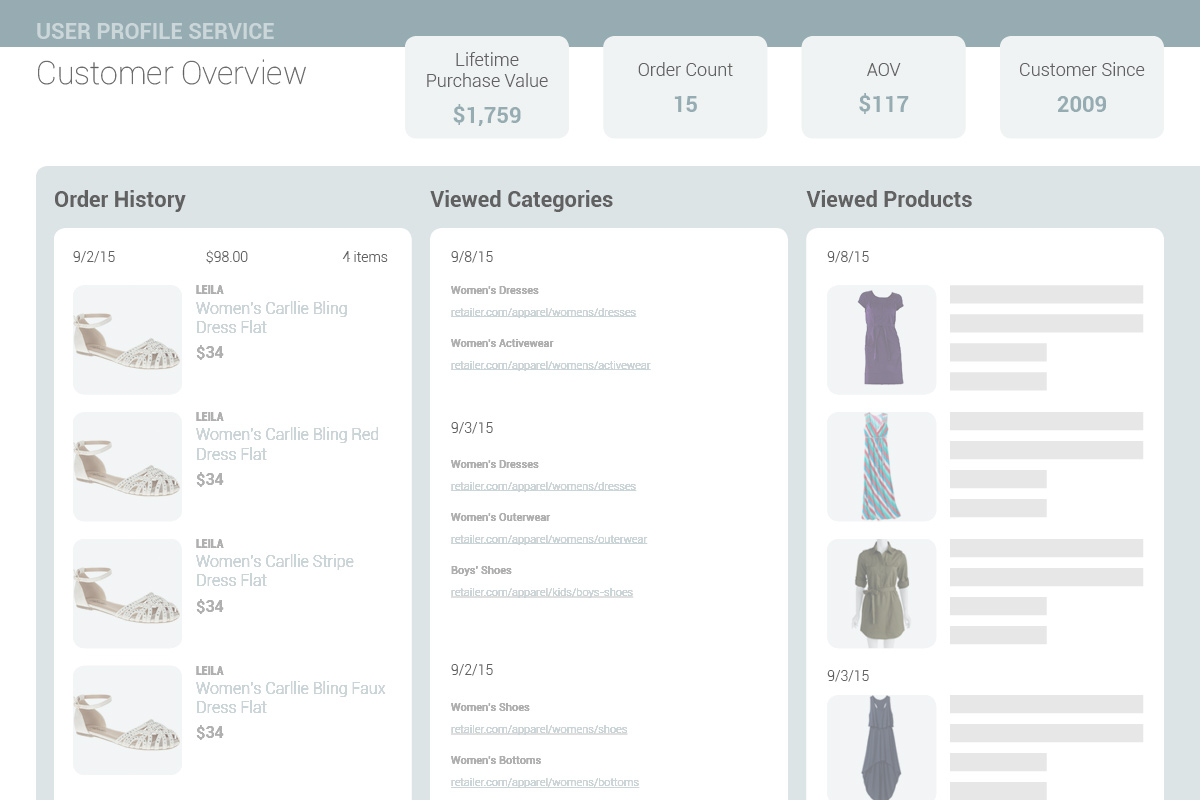
The User Profile Service synthesizes online clickstream behavior and purchases with explicitly input preferences—to recognize your customer regardless of channel.
#3 Communicate to the individual, not the masses…
A sophisticated retailer doesn’t cater to the masses, but rather understands the nuanced needs of individual customers. At its core, personalization must respect the shopper, and deliver the most relevant experience possible. A good personalization platform doesn’t merely offer comprehensive product recommendation technology, it also takes learned knowledge of your customers to offer relevant content and promotional messages across mobile and desktop sites, as well as within email communications. With an understanding of what messages resonate with different customer segments, HD Supply delivered curated messages to customer segments via email using RichRelevance’s Engage solution, and saw a subsequent 116% increase in conversion. Read more about their success story here.
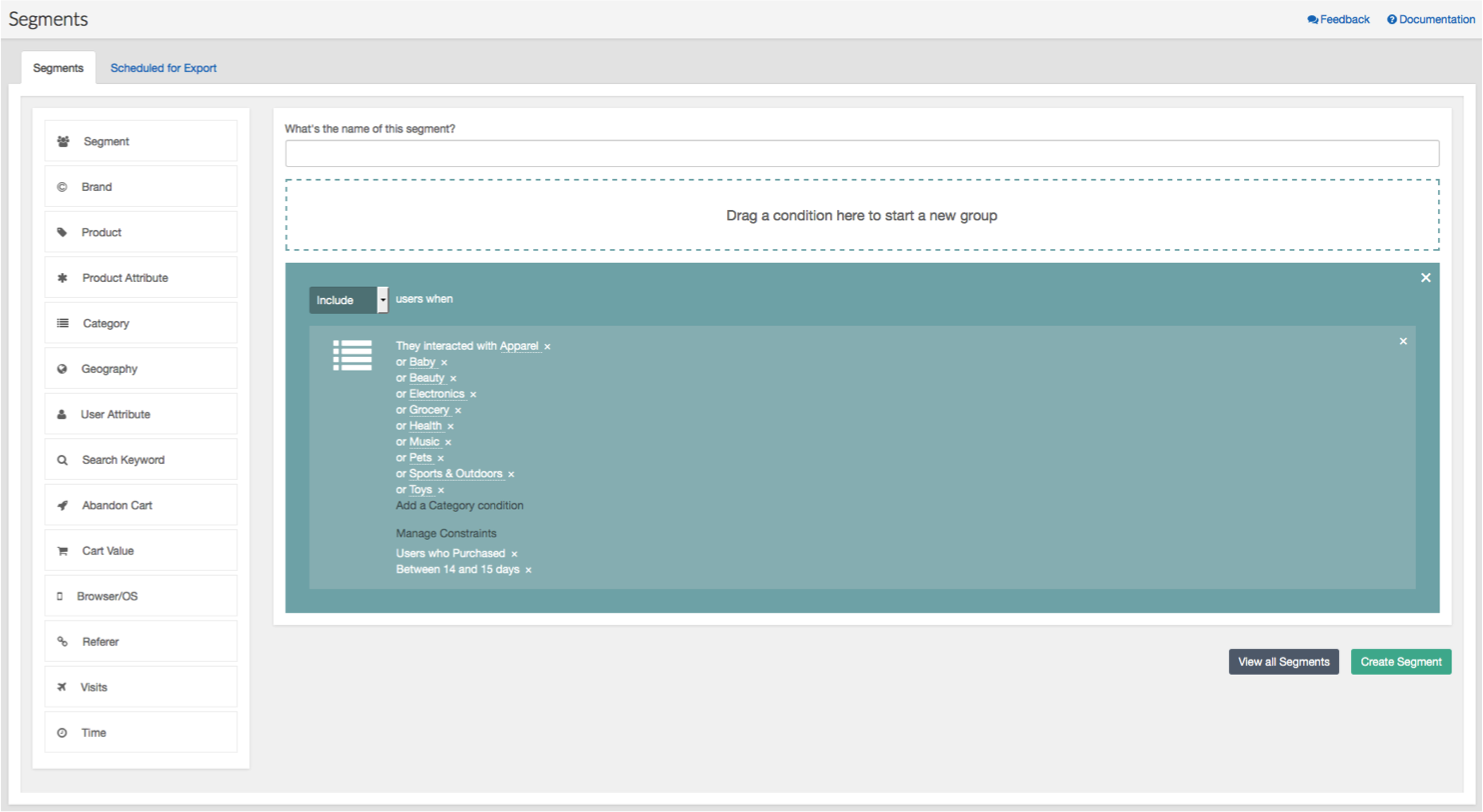
Deliver curated messages that resonate with customer segments using RichRelevance Engage™
#4 But curate at the account level
In contrast to a traditional B2C retailer, successful B2B personalization must consider account level pricing and product assortments. It must offer region-based strategies and user tools that personalize a site based on unique business needs. RichRelevance enables customers to offer different pricing and product assortments at the account level so that B2B retailers can maintain the right assortments at the right price points. This ensures that customers not only see the appropriate products, but that the personalization is further tailored to them.
B2B retailers should consider these four fundamental opportunities across key pieces of real estate: your website, email communications, and/or contact center. Even in its simplest form, product recommendations aimed at ensuring your customers or contact center agents have a full view into your product assortment can guide buying decisions; targeted promotional and marketing communications to customer segments after a certain navigation path has been demonstrated can also be impactful.
Personalizing the path to purchase ensures that you meet and exceed customer expectations, before your competitor has the chance to do so.
Contact us today to get started!
Download the Forrester report: Total Economic Impact™ Of Relevance Cloud™
Like it. Love it. Prefer it: The Customer Preference Center Makes Shopping Personal
Speak the Language
Deemed by Forbes as ‘‘The Year of the Millennial Customer,’ 2015 continues to see upward trends in social interaction and mobile engagement. In fact, millennial customers are expected to spend $200 billion by 2017, making them the largest global customer segment, with the largest share of wallet. Fortunately, millennials speak a fairly straightforward social language made up largely of likes and dislikes to indicate their interests and preferences. Providing this information across social networks with the click of a button has become second nature, yet the vast majority of this rich data goes unused. Today, there remains a very obvious gap between when a user provides these explicit social signals (consider how many likes you’ve gotten on a recent Instagram post) and how this data is leveraged to improve the customer experience.
But what if it was possible to create a shopping experience that not only mimicked the social experience, but also enabled you to enhance the individual customer’s experience with data collected from their own preferences?
Now you can. With the integration of the Customer Preference Center, available through the RichRelevance Recommend™ solution, you can easily capture individual tastes and preferences and put them to use by intelligently curating shoppers’ experiences on your site, mobile, email, in-store or contact centers in real time. Empowering shoppers to affect the products, brands and categories they see as they’re shopping brings a sense of 1:1 customer service not often found in the digital shopping experience.
Making it Personal is Simple
The Customer Preference Center offers benefits to shoppers and retailers across all channels. Using a flexible API, customer preferences are directly embedded as like/dislike/favorite buttons on any page, or as a survey that collects preferences on categories, brands and products. As shoppers engage and input preferences, their product assortments automatically update as they shop. Behind the scenes, the personalization system collects this invaluable data to deliver more relevant recommendations across all channels. The Customer Preference Center retains customer profile information in the Relevance Cloud’s User Profile Service so that no matter which channel a customer shops, collected data can be utilized to make the experience more personal, ultimately creating a happier and more loyal customer.
A leading apparel e-commerce company in Europe that generates over $155 million in annual revenue integrated Customer Preference Center technology across product pages and has seen 50% of users provided preferences in one month’s time. Those users interacting with preferences are significantly more engaged and spend 3.5x more than the ones that did not interact.
As a shopper, I can’t imagine anything more thrilling (or more dangerous for my wallet) than always being able to easily find things I liked from my preferred retailer.
Preferences Your Way
What does it look like? The possibilities with Customer Preference Center are endless, and customizable based on where and when the retailer chooses to engage customers. Preference can reside within existing recommendations or be as cutting edge as an integrated swipeable shopping experience (think Tinder).
Here’s are some ideas of how Customer Preference Center can work:
The Customer Preference Center enables retailers to avoid and/or supplement complicated social integrations by offering familiar social features across retail sites and mobile experiences. With flexible tools at your fingertips, customizing every shopper interaction has never been easier.
Forty-five years ago, Burger King introduced the concept of personalization with “Have It Your Way” and consumers have never looked back from the expectation of a personalized, relevant experience with key brands. Think of the Customer Preference Center as a digital innovation on “Have it Your Way,” taking its cue from the popularity of social media to share likes and preferences.
Contact us today to get started!
To be successful in omnichannel retail, brands need to combine the advantages of both e-commerce and physical retailing. The top brands in omnichannel follow strategies like leveraging physical stores as fulfillment centers and utilizing technology to engage consumers. L2’s Intelligence Report: Omnichannel Retail (http://www.l2inc.com/research/omnichannel-retail-2015) pinpoints the most forward-thinking players in each pricepoint.
Luxury
Luxury brands continue to lag in both e-commerce and in-store incentives. However, major players like Gucci, Dior, and Louis Vuitton made e-commerce a priority for the first time ever this year, signaling that they are finally catching up to other retailers.
Prestige
In the Prestige segment, Nordstrom and Neiman Marcus both invested substantially in omnichannel initiatives. Organizational shakeups played a large part in the change, such as Neiman Marcus fusing its online and store executive teams, contributing to the retailer’s shift from the E-Commerce Focused quadrant to the Omnichannel Leaders quadrant.
Mass
In the U.S., big box stores such as Walmart and Home Depot moved from e-commerce investments to in-store initiatives, highlighting their new strategy for competing with Amazon. By using brick-and-mortar stores as fulfillment centers as well as click-and-collect locations, these mass retailers can compete with the enormous reach of e-tailers. Conversely, Best Buy shifted from an in-store to an e-commerce focus, making the retailer a leader in omnichannel.
In the U.K., where click-and-collect has been popular for years, brands substantially accelerated omnichannel investments this year. Boots and John Lewis led the movement, launching inventory visibility across channels as well as advances in click-and-collect such as after-hours depots and drive-through windows. These moves continue to solidify U.K. brands’ leadership in omnichannel retail.




